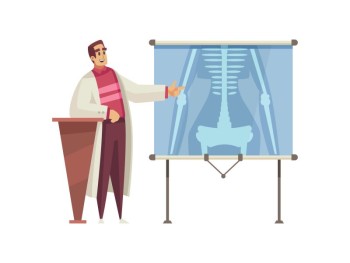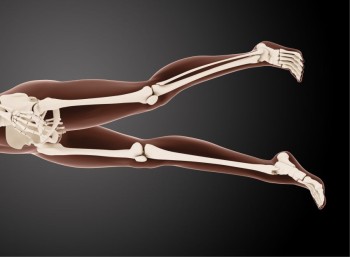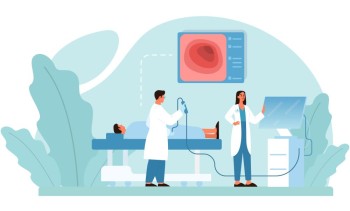
Intravenous Pyelogram (IVP) X-ray stands as a fundamental diagnostic tool in urological imaging, specializing in the visualization of the urinary system, particularly the kidneys and associated structures.
IVP X-ray with Cost
Intravenous Pyelogram (IVP) X-ray in Detail
Introduction
Intravenous Pyelogram (IVP) X-ray stands as a fundamental diagnostic tool in urological imaging, specializing in the visualization of the urinary system, particularly the kidneys and associated structures.
History of IVP X-ray
The history of IVP X-ray is marked by continuous advancements in urological imaging technology. From its inception to the present, the technique has evolved, becoming an indispensable tool for assessing kidney function and urinary tract abnormalities.
Purpose of IVP X-ray
The primary purpose of IVP X-ray is to detect abnormalities within the urinary system. This diagnostic tool is particularly adept at evaluating kidney structure and function, providing essential information for urological diagnoses and treatment planning.
Types of IVP X-rays
IVP X-rays come in various types, including Conventional IVP, which uses traditional film-based imaging, and Digital IVP, which utilizes modern digital imaging technology for improved clarity and efficiency.
Procedure of IVP X-ray
Before undergoing an IVP X-ray, patients undergo specific preparations to ensure optimal imaging results. The procedure involves the intravenous administration of a contrast medium, allowing for detailed imaging of the kidneys, ureters, and bladder over a specific timeframe.
Indications and
Contraindications
IVP X-ray is recommended in cases where abnormalities or issues related to the urinary system are suspected. However, healthcare providers may avoid the procedure in certain instances, such as in individuals with known allergies to contrast agents or specific medical conditions.
Risks and Safety Measures
While generally safe, IVP X-ray does carry some inherent risks, including exposure to ionizing radiation and potential allergic reactions to contrast agents. Healthcare professionals take necessary precautions, such as using minimal radiation doses, to minimize these risks and ensure patient safety.
Interpreting IVP X-ray Results
Interpreting IVP X-ray results requires a thorough understanding of normal and abnormal findings within the urinary system. Healthcare professionals analyze the images to identify any structural or functional abnormalities that may impact a patient's urological health.
Comparison with Other Urological Diagnostic Techniques
Comparing IVP X-ray with alternative diagnostic methods, such as ultrasound or CT scans, highlights the unique advantages and limitations of each approach. Understanding these differences assists medical professionals in choosing the most suitable imaging technique for specific urological assessments.
Case Studies
Real-life case studies provide tangible examples of how IVP X-ray has played a pivotal role in diagnosing and treating various urological conditions. These cases illustrate the practical application and success of the imaging technique in diverse urological scenarios.
Technological Advancements in IVP X-ray
Recent advancements in urological imaging technology have significantly improved IVP X-ray, making it more efficient and patient-friendly. Innovations in equipment contribute to enhanced accuracy and efficiency, providing valuable information for urological diagnoses and interventions.
Common Misconceptions about IVP X-ray
Addressing common myths and misconceptions surrounding IVP X-ray is crucial for fostering confidence in individuals scheduled for the procedure. Clearing up misunderstandings ensures informed decision-making and reduces anxiety associated with urological imaging.
Future Trends and Developments
As technology continues to advance, the future of IVP X-ray holds promising possibilities. Emerging trends hint at increased diagnostic accuracy, reduced invasiveness, and enhanced patient comfort in urological imaging, paving the way for more personalized urological care.
Patient Experiences and Testimonials
Personal stories from individuals who have undergone IVP X-ray provide valuable insights into the real-world impact of the procedure. These testimonials offer a human perspective on the patient experience and its role in their urological journey.
Conclusion
In conclusion, Intravenous Pyelogram (IVP) X-ray emerges as a cornerstone in urological diagnostics, providing essential information for healthcare professionals and urologists. Its rich history, diverse applications, and ongoing technological improvements make it an indispensable component of modern urological imaging.
FAQs (Frequently Asked Questions) about IVP X-ray
Can IVP X-ray detect kidney stones?
Yes, IVP X-ray is effective in detecting kidney stones, allowing for visualization of their size, location, and potential impact on kidney function.
Is IVP X-ray suitable for individuals with pre-existing kidney
conditions?
IVP X-ray may be used cautiously in individuals with pre-existing kidney conditions, and healthcare providers will assess the risks and benefits based on the individual's health status.
How often is IVP X-ray recommended for monitoring kidney health?
The frequency of IVP X-ray assessments depends on individual patient needs and the specific kidney conditions being monitored.
Can IVP X-ray be performed on pregnant individuals?
IVP X-ray is generally avoided during pregnancy unless absolutely necessary, as a precaution to minimize fetal exposure to ionizing radiation.
What can patients expect during and after an IVP X-ray procedure?
During the procedure, patients may experience a warm sensation as the contrast medium is administered. Afterward, they can typically resume normal activities, and healthcare providers will discuss the results during a follow-up appointment.
Is there an age limit for individuals undergoing IVP X-ray?
IVP X-ray can be performed on individuals of various age groups, and the decision is based on clinical indications and the specific healthcare needs of the patient.
Can IVP X-ray diagnose congenital urinary abnormalities?
Yes, IVP X-ray is valuable in diagnosing congenital urinary abnormalities, offering insights into structural issues that may affect normal kidney and urinary function.
What does the contrast medium used in IVP X-ray consist of?
The contrast medium typically contains iodine, enhancing the visibility of the urinary structures during imaging. Individuals with iodine allergies should inform their healthcare provider.
Can IVP X-ray be repeated for ongoing monitoring of kidney conditions?
Yes, IVP X-ray can be repeated as needed for ongoing monitoring of kidney conditions. The frequency of repeat scans is determined by the healthcare provider based on the patient's individual circumstances.
How long does it take to receive IVP X-ray results?
IVP X-ray results are usually available shortly after the procedure. Healthcare providers will discuss the findings with patients during a follow-up appointment.
(0)
Login to continue



